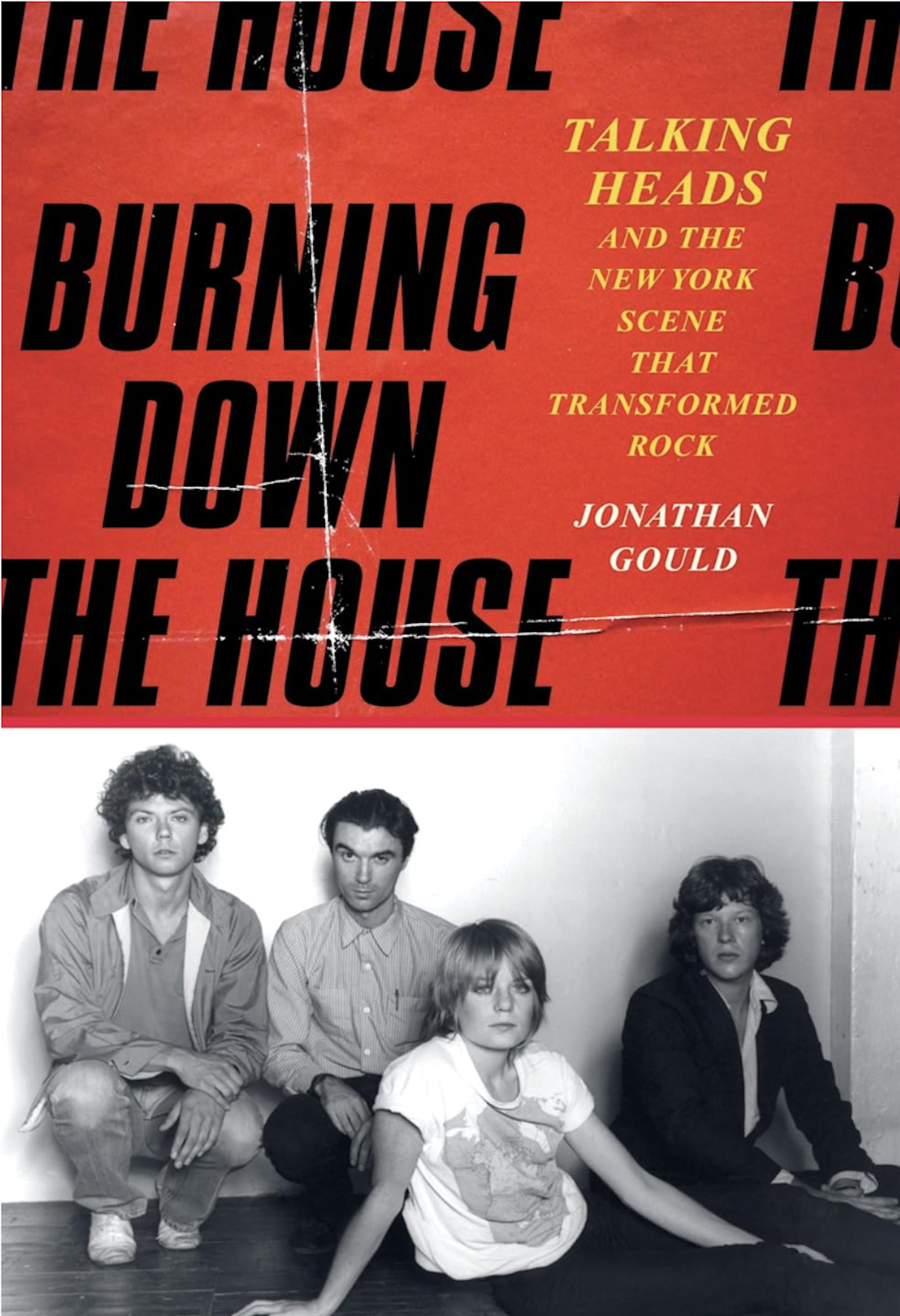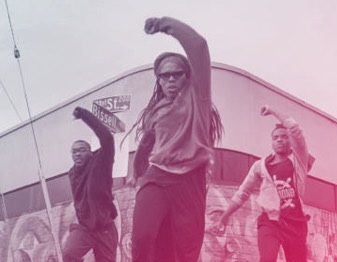He begins Burning Down the House: Talking Heads and the New York Scene That Transformed Rock with a vivid description of the drizzly June night in 1975 when the original trio — singer/songwriter David Byrne, bassist Tina Weymouth and drummer Chris Frantz — made its debut at the seedy club CBGB in downtown Manhattan, opening for the Ramones before a handful of patrons. With their “unremarkable haircuts” and “nondescript casual clothes,” they offered a sharp contrast to the “baroque turn” that rock fashion had taken in the 1970s, Gould observes.
“The qualities that characterized this neophyte group in their first public performance centered on the awkward, disquieting intensity of their singer-guitarist, David Byrne, their sketchy, skeletal arrangements, and the quirky intelligence of their songs,” Gould writes. “Tall and thin, with a long neck and an anxious, wide-eyed stare, Byrne stood stiffly at the microphone, his upper body jerking and jiggling like a shadow puppet as he scratched out chords on his guitar. … Instead of doing his best to command the stage and the room, Byrne looked trapped by his surroundings, as if he were prepared, at any moment, to make a break for the door.”
Within a couple years of their zeitgeist-changing performances, they enlisted keyboardist/guitarist Jerry Harrison, adding a much-needed dose of professionalism to the band. Gould, a former professional musician, writes exceedingly well about music but suffers from a kind of completism, cramming in an almost mind-numbing level of detail including the name of the elementary school in Pittsburgh where a young Frantz first took up drums to every military posting of Weymouth’s naval aviator father.


